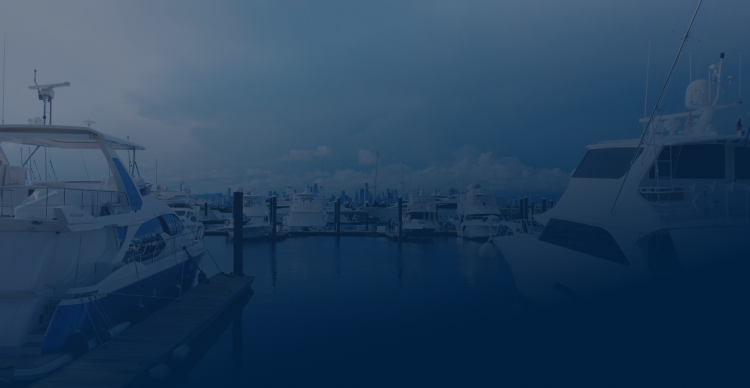I'm Emery, a broker/transaction advisor with over a decade of specialization in used yacht transactions and inspections. Over the past ten years, I've assisted more than 300 cliaents with yacht acquisitions, refits, and deliveries, and serve as a contributing writer for Yachting Magazine.
I wrote this article because, in my practice, I've seen too many buyers discover aging equipment, missing records, and skyrocketing costs only after taking delivery of their pre-owned yacht. My goal is to help you avoid the pitfalls I've witnessed firsthand.
Table of Contents:
1. Why Key Equipment Upgrades Are Essential After Used Yacht Delivery?
2. 7 Critical Components That Must Be Prioritized for Inspection and Replacement in Used Yachts
3. Real-World Experiences With Used Yacht Equipment Upgrades
4. Equipment Upgrade Budget Planning & Negotiation Strategy
5. How to Select Reliable Equipment Upgrade Suppliers?
6. Conclusion
7. Frequently Asked Questions
1. Why Key Equipment Upgrades Are Essential After Used Yacht Delivery?
In my work, whenever I accompany clients for pre-delivery inspections, I always emphasize: equipment upgrades aren't a luxury—they're essential for safety and sustainable operation.
Accelerated Equipment Degradation in Marine Environments
Salt Spray Exposure: Sea breezes carry salt particles that accelerate corrosion of metals, electronics, and connectors.
Electrochemical Corrosion: Seawater/saltwater environments facilitate electrochemical reactions, causing long-term microcurrent corrosion of hull metals and structural joints.
UV Degradation: Decks, exposed piping, cables, plastic components, and rubber seals suffer reduced elasticity and cracking from prolonged exposure to solar ultraviolet radiation.
These environmental factors are not theoretical constructs but realities I've witnessed firsthand during numerous inspections: yachts of identical models and year of commissioning can exhibit starkly different equipment conditions due to varying maintenance histories.

The Issue of Missing Maintenance Records in Used Yachts
Compared to new yachts, used vessels often suffer from: missing repair logs, inadequate operator handover, unclear replacement parts, and unknown usage history. Therefore, confirming whether critical equipment has undergone thorough overhaul or replacement must be prioritized.
Upgrades = Enhanced Safety + Reduced Hidden Costs Later
Safety: For instance, aged fuel hoses, heavily carbon-deposited engine filters, or inaccurate navigation equipment can directly cause accidents.
Hidden Costs: Initial savings on repair or replacement budgets often lead to repeated post-delivery repairs, downtime, and depreciation costs.
The newly revised H-24 Fuel System Standard by the American Boat & Yacht Council (ABYC) states: “Aged fuel systems are one of the primary hazards for marine fires.”
Additionally, the U.S. Coast Guard's 2024 Recreational Boating Statistics Report indicates that “mechanical failure/navigation equipment malfunction” ranks among the top causes of accidents.
Therefore, when signing a used yacht delivery contract, ensure you include a budget for “critical equipment upgrades” and conduct rigorous inspections before delivery.
2. 7 Critical Components That Must Be Prioritized for Inspection and Replacement in Used Yachts
Based on years of experience in used yacht sales and inspections, I recommend prioritizing these 7 critical systems for inspection/replacement. This approach integrates real-world symptoms, repair costs, and negotiation strategies. You must understand not only “what to replace,” but also ‘why’ and the approximate “budget range” to negotiate effectively and plan your budget.
| Category | Replacement Reason | Real-world Examples/Symptoms | Budget Range |
| Navigation Electronics (Radar, GPS, AIS) | Rapid technological updates; outdated equipment reliability issues | Positioning inaccuracies, signal loss, radar failure to detect small targets | US$5,000–50,000 |
| Engine Consumables System (Sacrificial Anodes, Filters) | Critical for navigation safety yet often overlooked | Engine overheating, difficult starts, potential damage | US$500–5,000 |
| Batteries & Electrical System | Most common aging components, impacting vessel-wide electrical safety | Voltage fluctuations, power outages, instrument malfunctions | US$1,500–15,000 |
| Hull Systems (Propellers, Bearings, Rudder Mechanisms) | Severe corrosion from prolonged seawater exposure and extended inactivity | Abnormal noises, reduced speed, increased vibration | US$3,000–40,000 |
| Fuel/Freshwater Piping and Valves | Aging leads to leaks, causing corrosion or contamination | Abnormal odors, reduced flow, fuel leaks | US$1,000–8,000 |
| Safety Equipment (Life Jackets, Fire Suppression Systems) | Must comply with latest regulations, often overlooked by buyers | Expired labels, non-functional systems | US$300–10,000 |
| Sanitation and HVAC Systems | Crucial for onboard comfort; non-life-threatening but highly impactful | Odors, poor cooling, frequent repairs | US$1,500–20,000 |
Key Priorities
First: Verify life-critical safety equipment (fuel systems, safety gear, battery/electrical systems)
Second: Mechanical systems affecting performance (engine consumables, hull systems, navigation electronics)
Finally, consider experience-enhancing upgrades (e.g., audio systems, interior finishes, comfort amenities)—important, but only after safety and performance are assured.

3. Real-World Experiences With Used Yacht Equipment Upgrades
Over the past decade, I've participated in numerous used yacht transactions and surveys. The following two cases illustrate the consequences of “neglecting critical equipment upgrades” and the negotiation value of “timely upgrades.”
Case 1: Early last year, I accompanied a client to Florida for a yacht inspection. The vessel appeared well-maintained externally, but its navigation system dated back to 2010 and frequently lost AIS signals. After I highlighted this issue, the buyer renegotiated with the seller: ultimately securing a 12% price reduction and an agreement for the seller to cover navigation equipment replacement costs.
Had this oversight persisted, the client would have faced positioning errors and course deviations during their first long voyage post-delivery, necessitating frequent port returns for inspections. The resulting costs and frustrations would have far exceeded the savings achieved.
Case 2: Another client considered an Azimut 50 Fly. The owner claimed the “fuel system had recently been inspected,” but a detailed review of old repair records revealed the hoses were still factory originals, having been in use for years. Fuel leakage occurred during the maiden voyage. Fortunately, it was detected promptly and did not cause a fire. However, repairs, downtime, price renegotiation, and trust issues collectively consumed three weeks and cost nearly US$8,000. The buyer later demanded the seller cover the replacement of hoses and related repair expenses based on this incident.
This case underscores: even when buyers secure favorable pricing, significant risks persist if critical equipment conditions aren't verified before delivery.
When purchasing used yachts, buyers must thoroughly understand the 7 Common Part Problems & Repair Guide. Prior to contract signing, attach a “Critical Equipment Replacement Checklist” and document “old system vs. upgraded” conditions with photographs for negotiation and future maintenance purposes.

4. Equipment Upgrade Budget Planning & Negotiation Strategy
Establishing the Concept of Major Upgrade Budgets
In assisting numerous clients with pre-owned yacht acquisitions, I recommend setting aside 5%–15% of the purchase price as the “Initial Critical Equipment Upgrade Budget.” For example, a yacht priced at US$300,000 should allocate US$15,000–45,000 for upgrades. This ratio is not arbitrary but based on average replacement and upgrade costs statistically derived from my years of transactions.
How to Negotiate with the Owner Using Inspection Findings
List “critical equipment requiring replacement/repair” as a specific item in the survey report, clearly stating the reasons, estimated costs, and priority level.
Present this to the seller: Based on this report, you may request the seller to cover part or all of the upgrade costs, or negotiate a price discount.
Recommend using the third-party surveyor's report as the negotiation basis, which also aligns with USCG and ABYC standards emphasizing that “owners should provide maintenance records, and buyers should verify equipment condition.”
Include a “Critical Equipment Upgrade Clause” in the contract: If equipment listed in the report remains unupgraded at delivery, the seller bears repair costs for the subsequent X months. This protects the buyer while incentivizing seller compliance.
5. How to Select Reliable Equipment Upgrade Suppliers?
Choosing reputable yacht equipment suppliers or repair yards is crucial for ensuring upgrade quality and post-sale maintenance. Below are core evaluation criteria distilled from years of collaboration:
Prioritize technicians/yards certified by American Boat & Yacht Council (ABYC), RINA, or CE, as they are familiar with international standards and regulations.
Verify brand authenticity + genuine parts sourcing channels + warranty terms. For critical equipment (e.g., navigation systems, engine hoses, stern bearings), insist on genuine or certified replacement parts.
Retain installation records, photographs, inspection reports, and warranty agreements—ideally organized into digital archives.
Beware of exaggerated claims: Vendors promising “no maintenance required after replacement” often overstate capabilities. Yacht equipment maintenance is routine; the priority is ensuring equipment remains in a “maintainable and monitorable state.”
Recommend including a “Quality Acceptance” clause: After upgrades, the buyer or surveyor conducts independent verification to confirm equipment functionality and documentation completeness.
6. Conclusion
As a yacht transaction advisor with over a decade of experience, I've witnessed countless owners and buyers caught unprepared by equipment deterioration. I reiterate: “Not all equipment needs replacement, but you must know which components are priorities!” When taking delivery of a pre-owned yacht, performing a “critical equipment scan and upgrade” upfront is often more economical and safer than remedial actions later.
If you are considering purchasing a used yacht or have already bought one awaiting delivery, I warmly welcome your contact. I offer professional evaluations, upgrade recommendations, and negotiation support services. Let us ensure your voyages are safe, reliable, and enjoyable.
7. Frequently Asked Questions
Q1: What equipment should I replace first on a used yacht?
A: Prioritize safety systems—fuel hoses, electrical wiring, and batteries—before luxury or comfort upgrades.
Q2: How much should I budget for used yacht upgrades?
A: Typically 5–15% of the yacht’s purchase price, depending on age, model, and prior maintenance.
Q3: Should I hire a surveyor before negotiating with the seller?
A: Absolutely. A third-party surveyor’s report forms the best basis for negotiation and risk mitigation.
About the Author
Emery
Yacht Broker / Yacht Transaction Consultant / Contributing Writer for Yachting Magazine
SAMS Certified Surveyor #2458
Honored as one of “Asia's Top 10 Yachting Industry Experts” and recipient of the “Outstanding Yacht Broker Service Award”
Last Updated: November 2025
Applicable Audience: Owners, prospective buyers, and sellers planning to purchase or sell pre-owned yachts, as well as yacht brokers, transaction consultants, and other industry professionals.
Disclaimer
The information provided herein is based on the author's over a decade of experience in pre-owned yacht transactions and inspections, intended as a reference for buyers, sellers, and related professionals. However, due to the complexity and uncertainty surrounding yacht equipment conditions influenced by multiple factors, recommendations regarding key equipment replacement, budget planning, negotiation strategies, and other content herein cannot replace professional on-site inspections and survey reports. Readers should consult professional surveyors or relevant institutions based on specific circumstances when implementing actions. The author and publisher assume no liability for any direct or indirect losses arising from actions taken based on this content.



